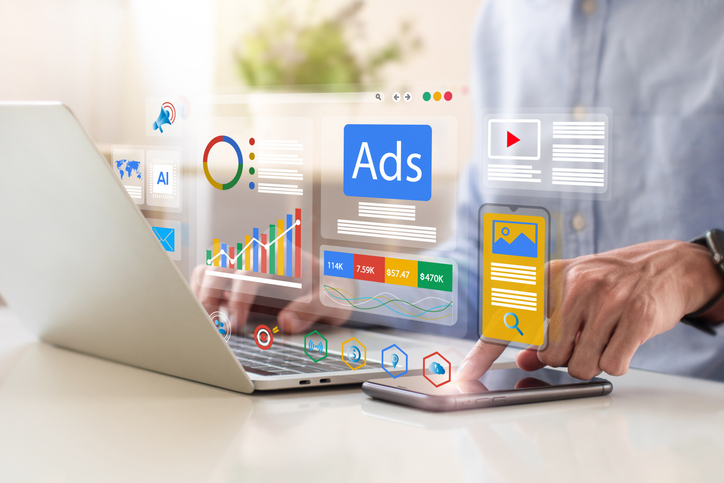In the competitive world of digital advertising, businesses are constantly looking for ways to improve performance and drive better results. One of the most effective tools for refining your advertising campaigns is A/B testing. By comparing two variations of an ad to see which performs better, businesses can make data-driven decisions that lead to higher conversions and improved ROI.
Understanding A/B Testing
A/B testing, also known as split testing, involves creating two different versions of an ad—whether it’s the headline, design, copy, or call-to-action—and showing each to a similar audience to determine which performs better. The goal is to test one element at a time so you can pinpoint exactly what drives better results, whether it's higher click-through rates (CTR), improved engagement, or more conversions.
For instance, if you're running a Facebook ad, you might create two versions of the ad with different headlines. One group sees the original headline (A), while the other group sees the variation (B). Over time, you’ll be able to see which version resonates more with your audience, allowing you to optimize future ads based on this data.
Key Benefits of A/B Testing
- Increased Conversion Rates
The most obvious benefit of A/B testing is improved conversion rates. By continually testing different elements of your ads, you gain insights into what works best with your audience. Whether it’s testing ad copy, visuals, or CTAs, refining these components can lead to better results and ultimately more leads or sales. - Data-Driven Decision Making
A/B testing allows you to make decisions based on actual performance data, rather than relying on guesswork. This method takes the uncertainty out of advertising, ensuring that changes you make are grounded in facts. As a result, you can optimize your campaigns with confidence, knowing the adjustments are backed by real-world results. - Reduced Advertising Costs
When your advertising campaigns are optimized through A/B testing, you’re likely to see better results with the same or lower budget. More effective ads mean you’re getting higher returns on your investment, reducing the cost per click (CPC) or cost per acquisition (CPA). Over time, this leads to a more efficient use of your ad spend. - Improved Audience Insights
A/B testing doesn’t just improve the performance of individual ads—it also helps you learn more about your target audience. For example, testing different headlines, tones of voice, or imagery can reveal what resonates most with your audience. These insights can then be applied to future campaigns across various platforms, from Facebook Ads to Google Ads and beyond. - Faster Optimization
The digital marketing landscape moves quickly, and A/B testing enables you to keep up with these changes. By running tests continuously, you can quickly identify and implement improvements to your campaigns, ensuring that your ads remain competitive and relevant. This iterative process keeps your advertising efforts fresh and aligned with current consumer trends.
What to Test in A/B Testing
A/B testing offers endless possibilities, but here are some of the key elements to consider when optimizing your advertising campaigns:
- Headlines: The first thing people see in an ad, headlines often determine whether someone clicks through. Try testing different headline styles, such as questions vs. statements or urgency-based headlines vs. benefit-driven ones.
- Ad Copy: Experiment with the tone of voice, length of copy, and messaging. See whether short, punchy copy outperforms longer, more detailed descriptions.
- Call-to-Action (CTA): The CTA is crucial for driving conversions. Test different CTA phrases, colors, or button placements to determine which encourages more clicks.
- Visuals: Whether you’re using images or videos, test different visual elements to see which grabs the most attention. Consider testing colors, image style, or video length.
- Targeting Options: On platforms like Facebook Ads or Google Ads, you can test audience targeting options to discover which demographics or interest groups respond best to your ad.
Best Practices for A/B Testing
- Test One Variable at a Time
To get clear and actionable results, it’s essential to isolate one variable per test. This ensures you know which element caused the difference in performance. For example, if you’re testing two different headlines, keep the rest of the ad elements identical. - Run the Test Long Enough
Ensure your A/B tests run long enough to collect meaningful data. A common mistake is stopping the test too early, which can lead to inconclusive or misleading results. The more data you gather, the more accurate your findings will be. - Use a Large Enough Sample Size
For statistically significant results, your test needs to reach a wide enough audience. A small sample size might skew your data, making it difficult to draw reliable conclusions. - Apply Findings Across Campaigns
Once you’ve identified winning variations, apply those insights to other campaigns. This ensures your learnings are put to use on a broader scale, maximizing the impact of your optimizations.
A/B testing is an essential tool for businesses looking to optimize their advertising campaigns and achieve better results. By testing variations of ads and making data-driven adjustments, you can significantly improve your conversion rates, lower advertising costs, and gain valuable insights into your audience’s preferences. Implementing A/B testing consistently allows you to stay ahead of the competition, ensuring that your advertising efforts are always performing at their best.




